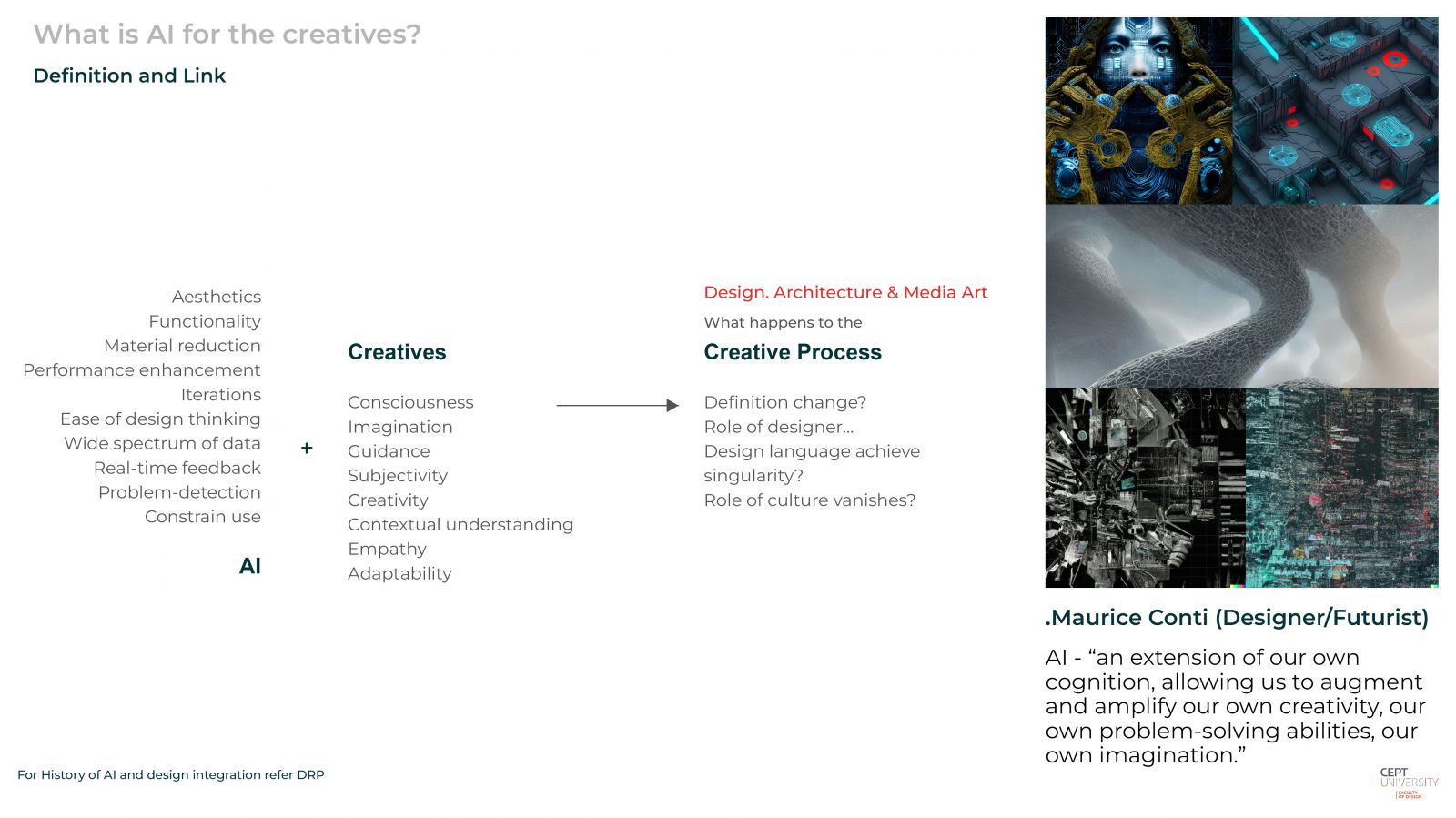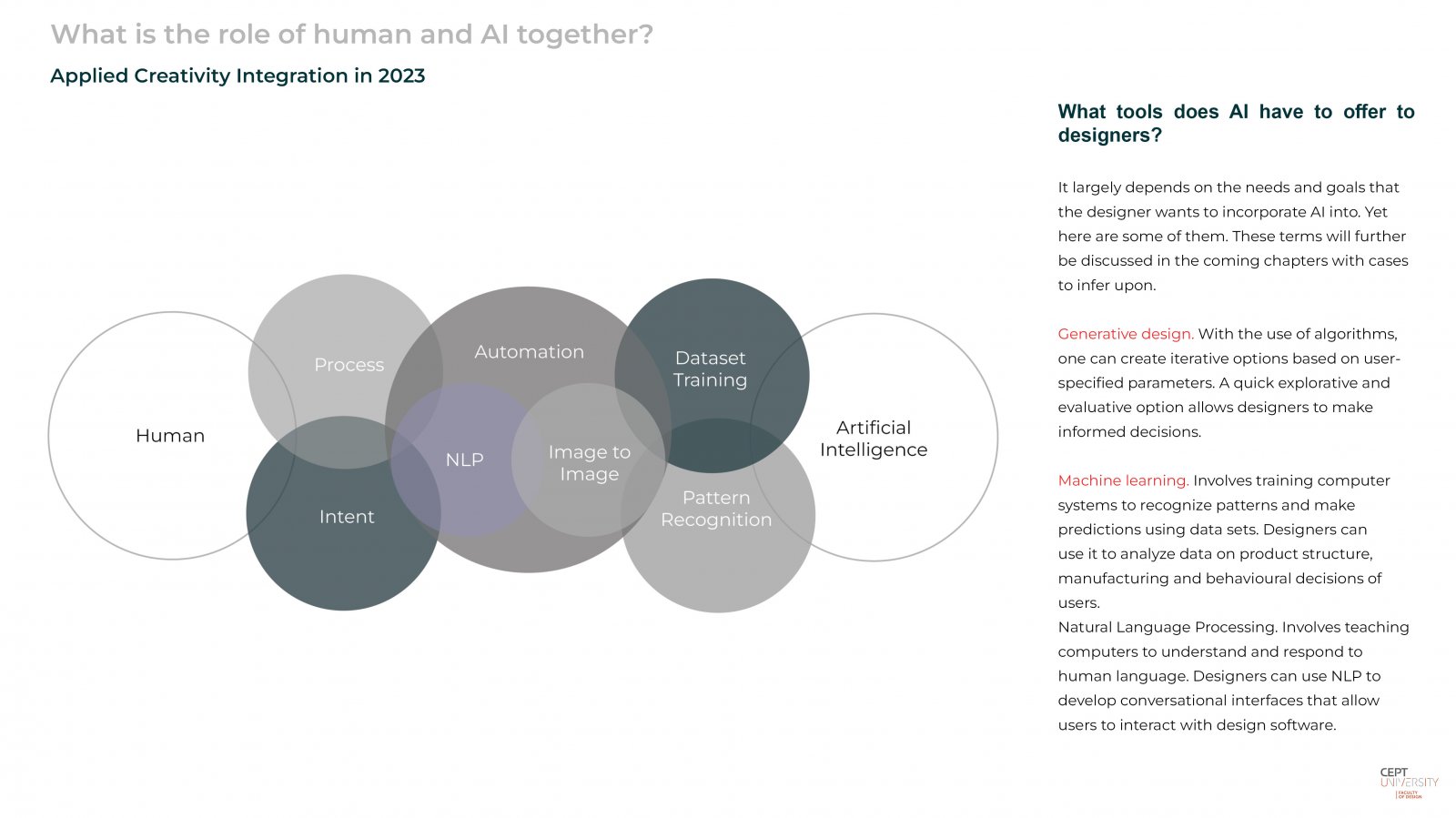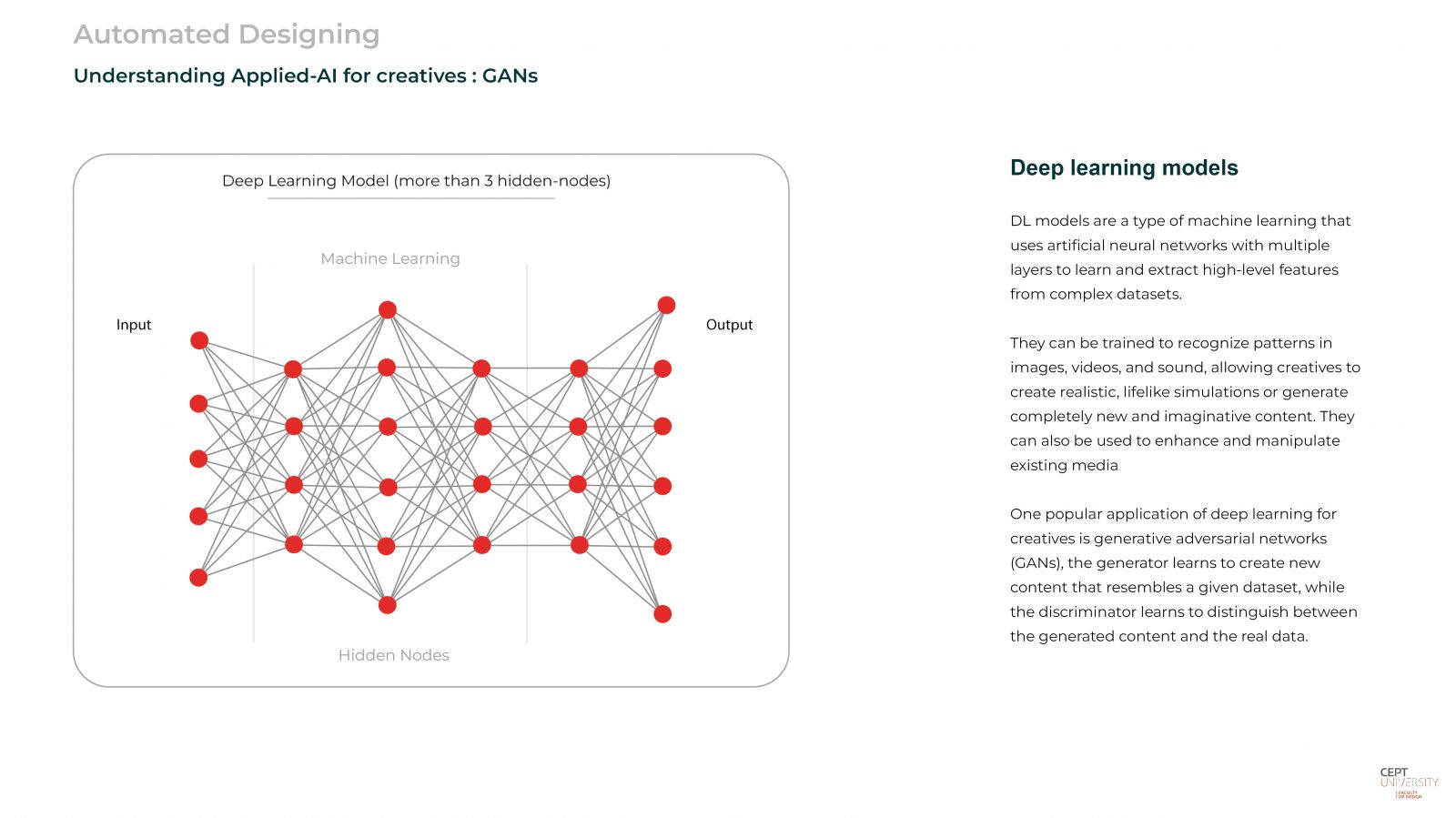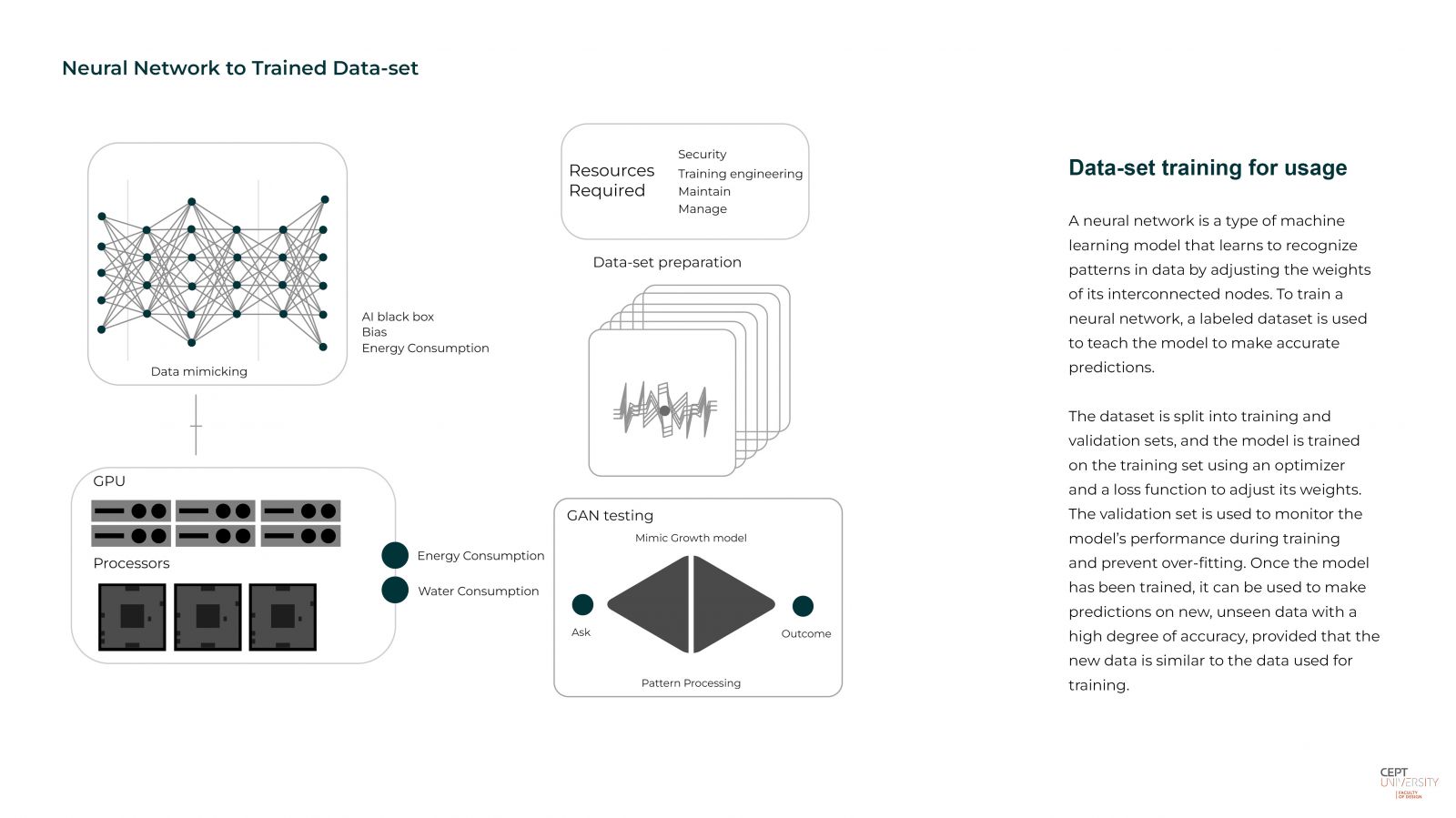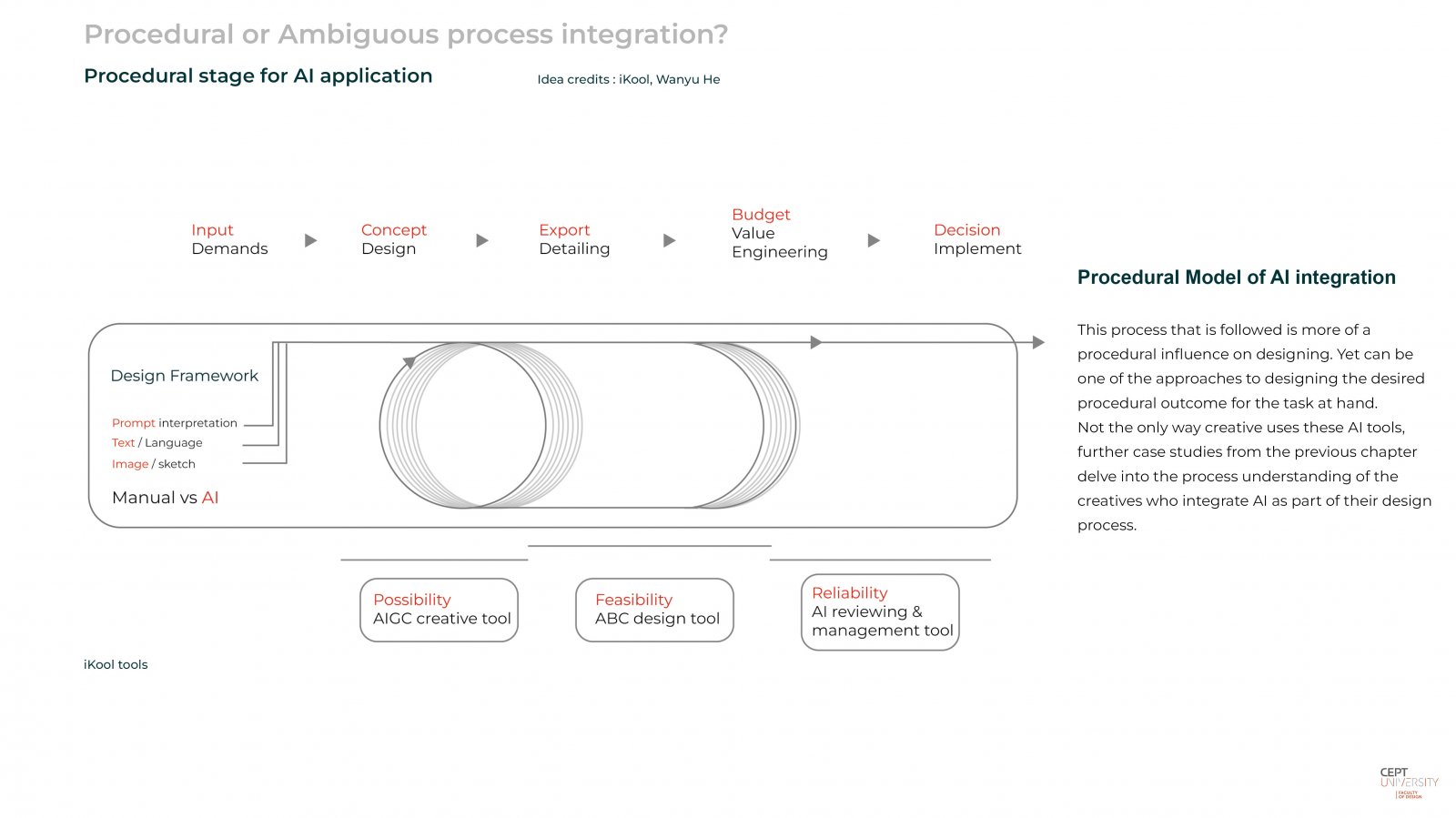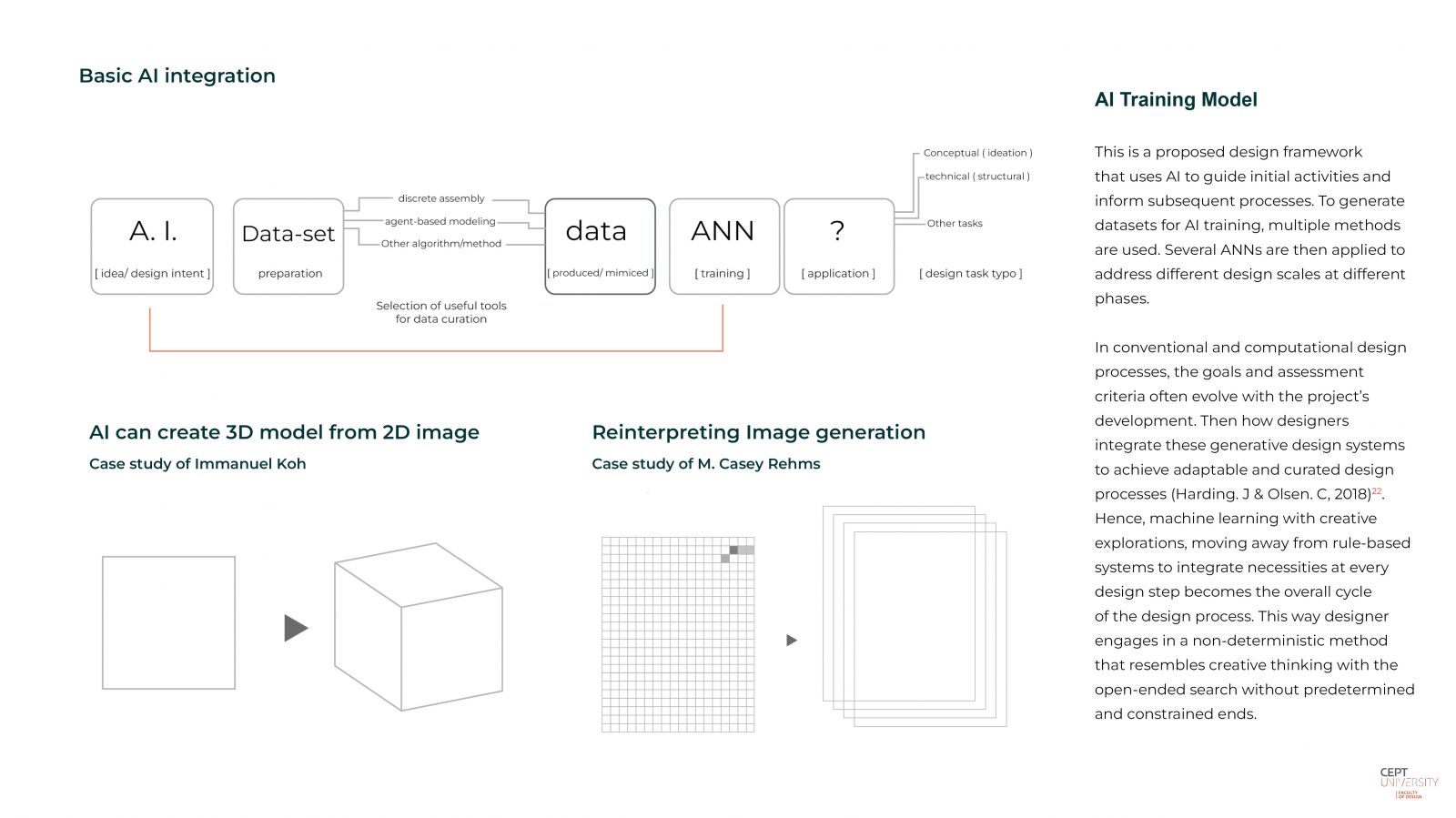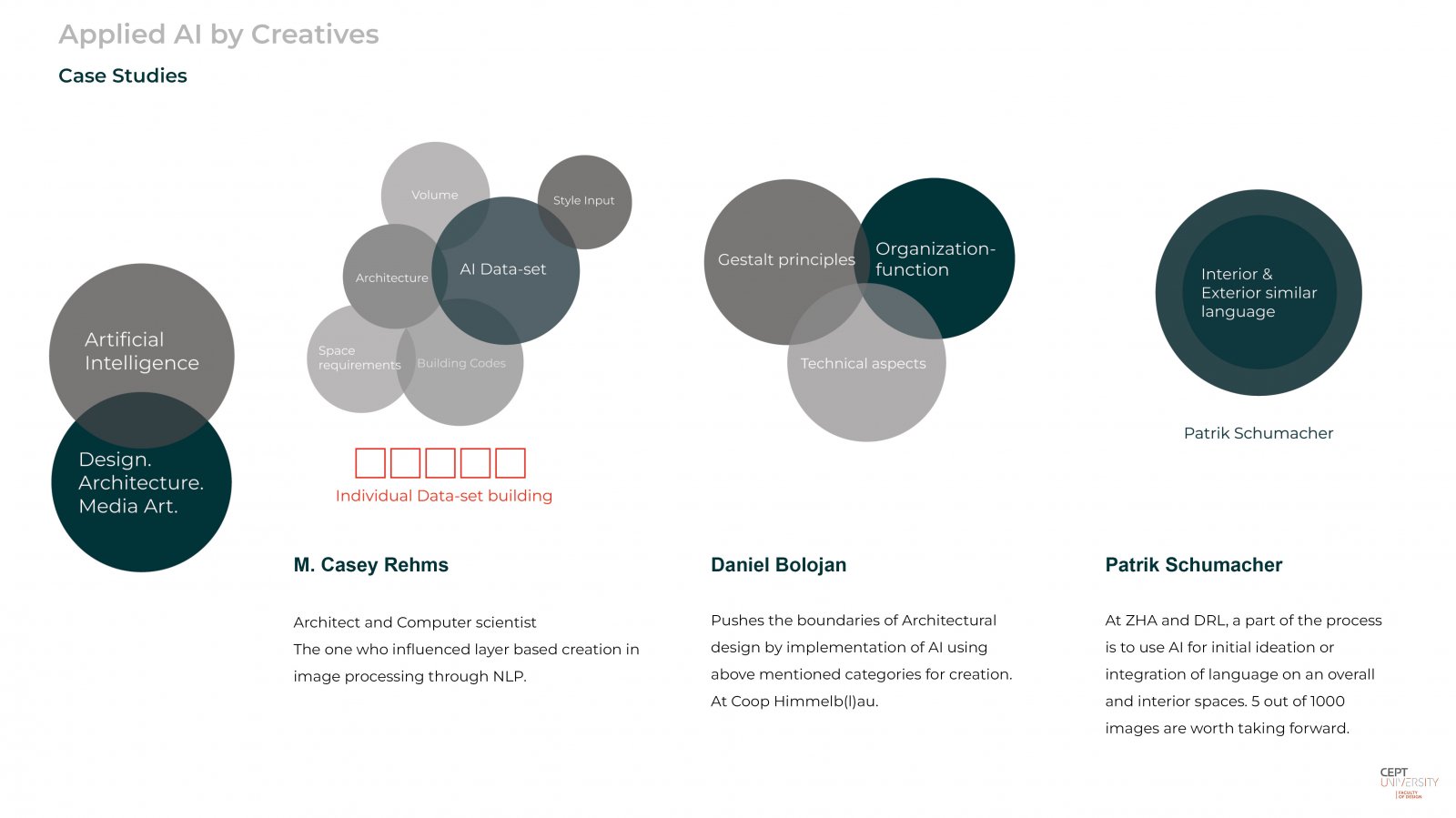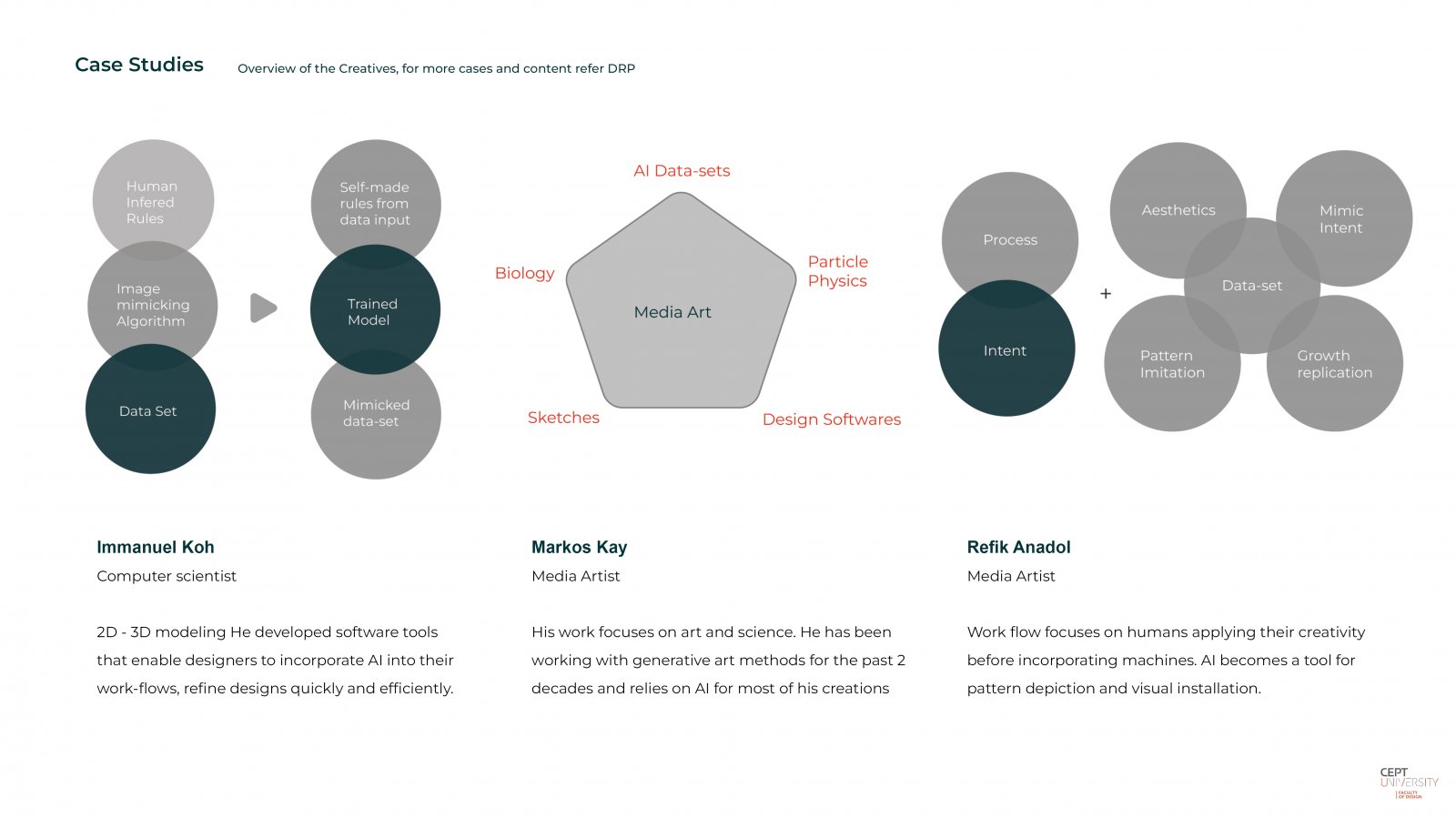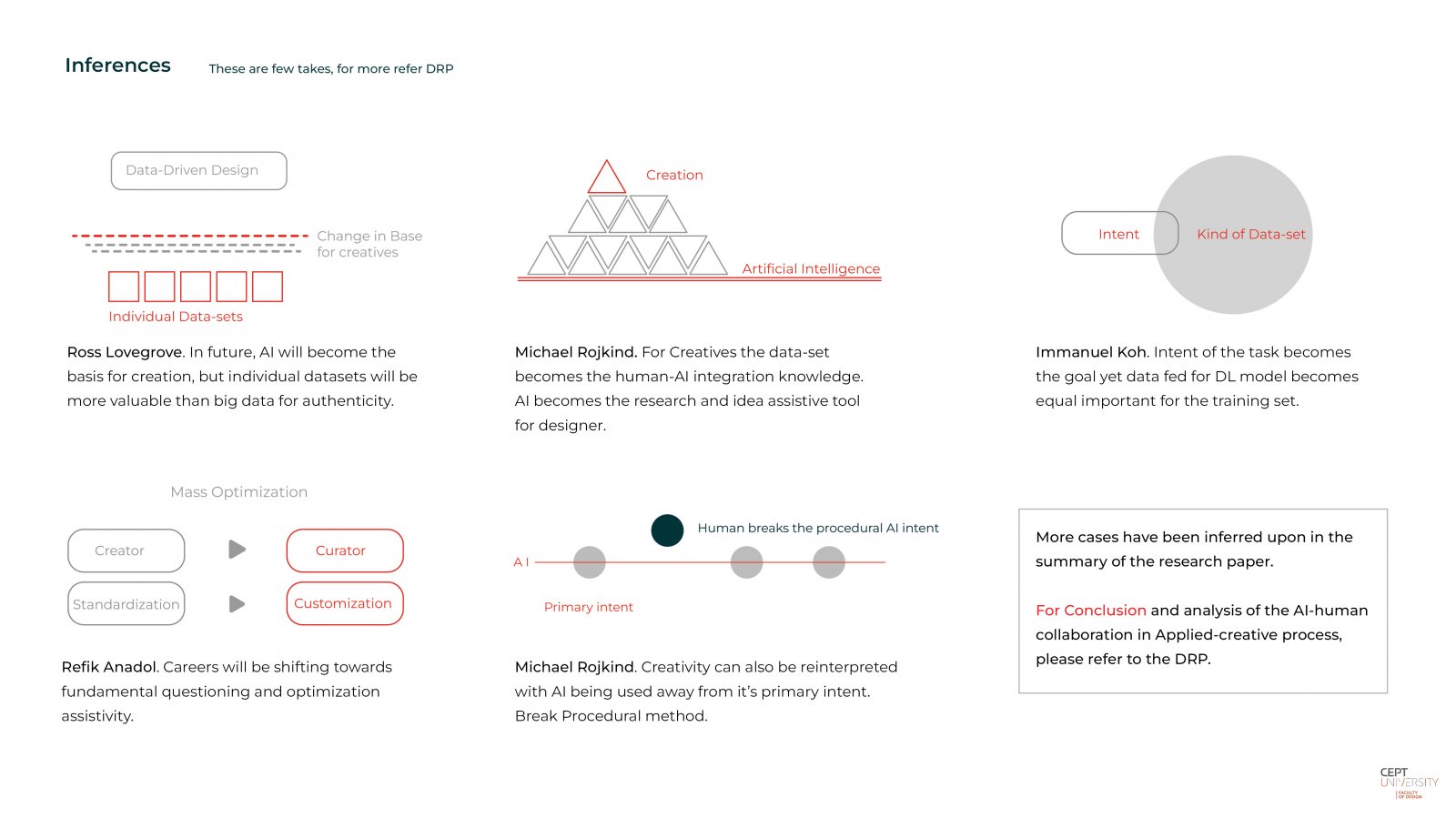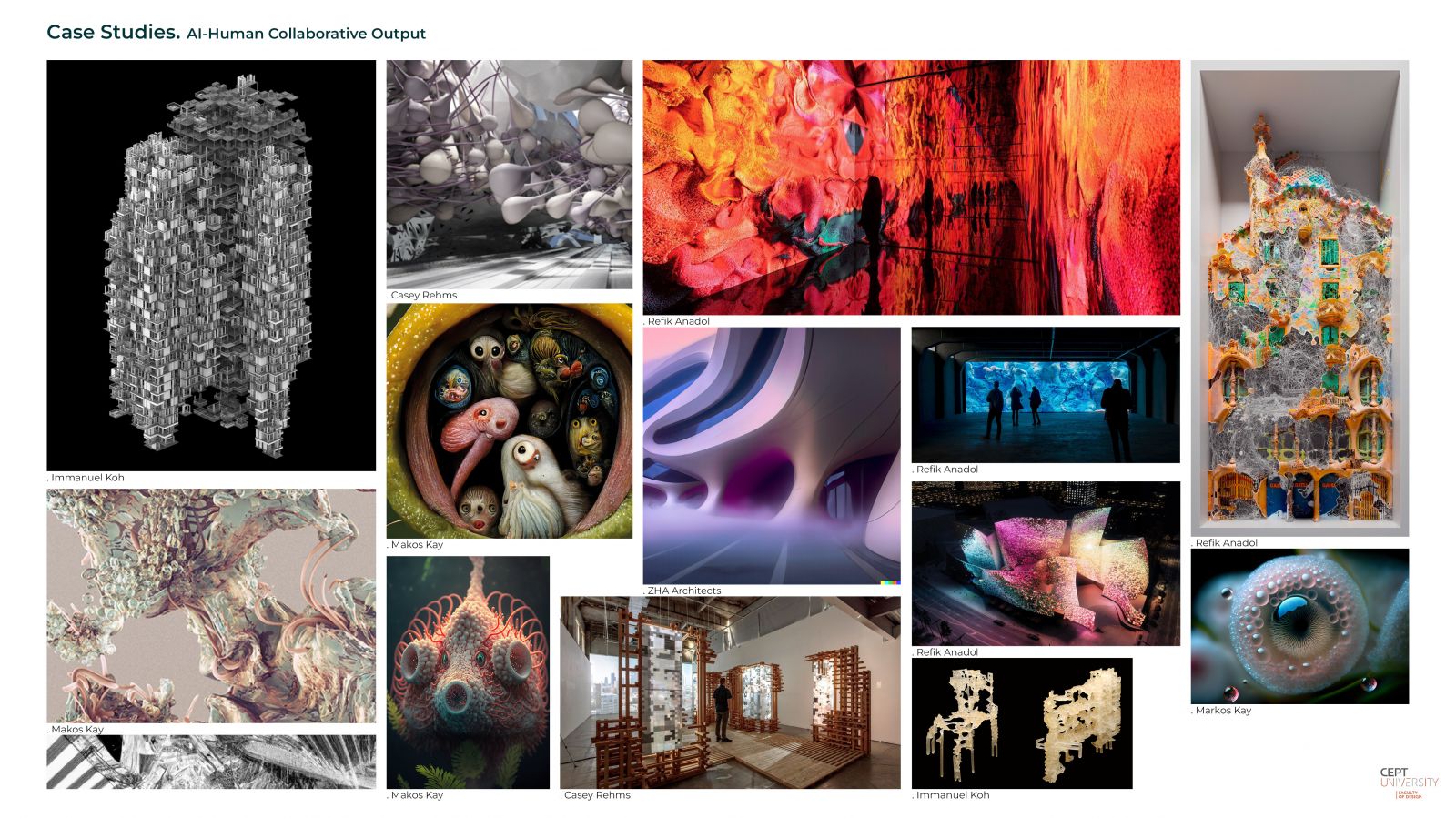Your browser is out-of-date!
For a richer surfing experience on our website, please update your browser. Update my browser now!
For a richer surfing experience on our website, please update your browser. Update my browser now!
This paper examines Artificial Intelligence as a creative tool and reflects upon the inferences from the automation of applied creative practices. Further substantiating the cases in the field of design, architecture and media art. It is an addressal of AI in enhancing the creativity (Visual styling, material reduction, and others become secondary lenses) of the designer at the conceptual stage of the process. Changes in the early phase of the creative process are the most critical ones, where design choices majorly take their form. (Wang et al. 2002) AI becomes a tool for speeding up these processes, generating multiplicity in interaction and possible performance enhancement. The intent is to understand the practical impact of AI on applied creative practices. Cases reflecting the implementation of Generative AI tools by creatives like Danial Bolojan, Immanuel Koh, M. Casey Rehm, Rafik Anadol, Ross Lovegrove, Markos Kay, Wanyu He, Michael Rojkind and Patrik Schumacher, The paper infers upon the formation of the conceptual phase in the design process with AI in the picture. Research methods - Case studies, theoretical research, and literary analysis to understand the depth and influence of automation in applied creative practice.
